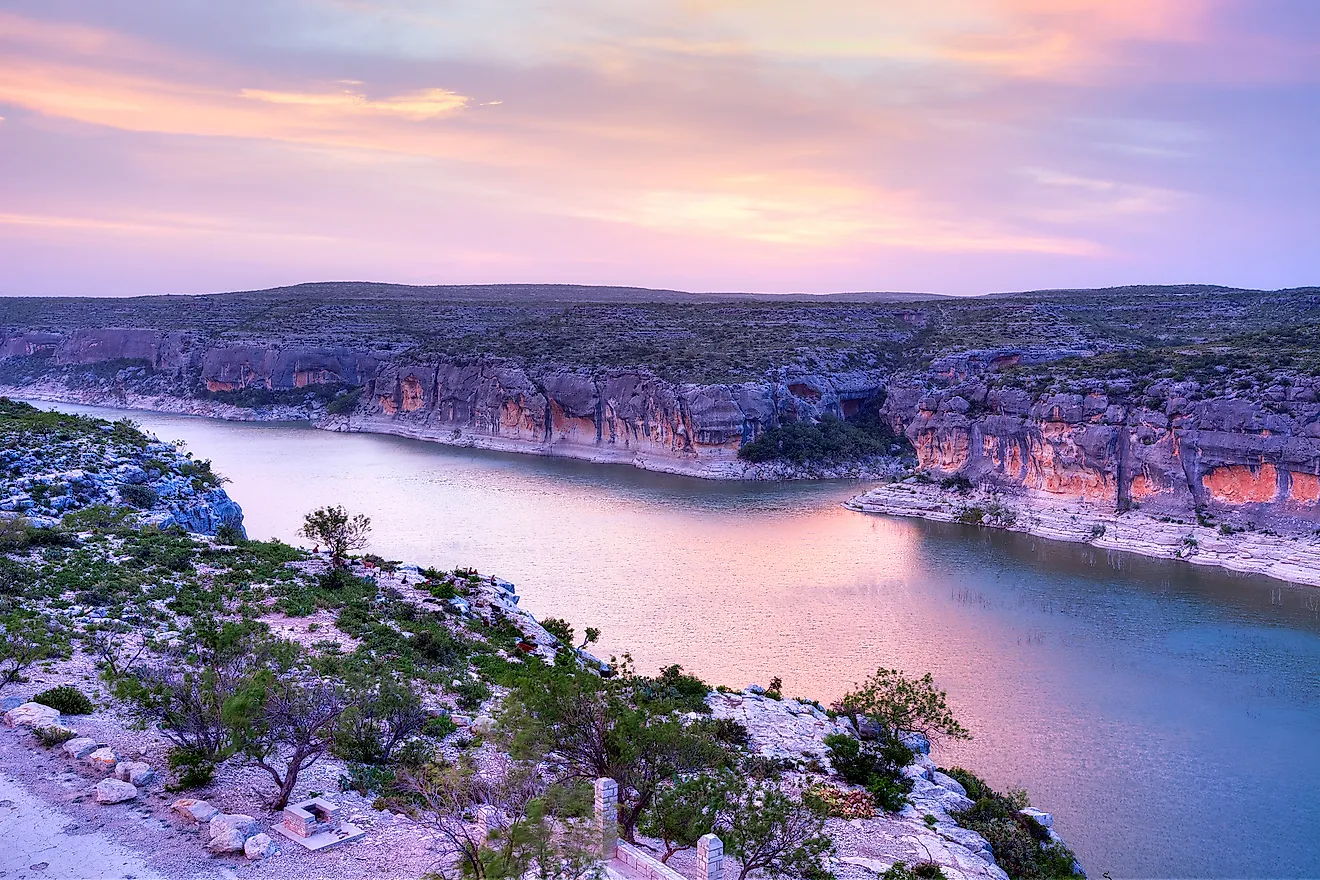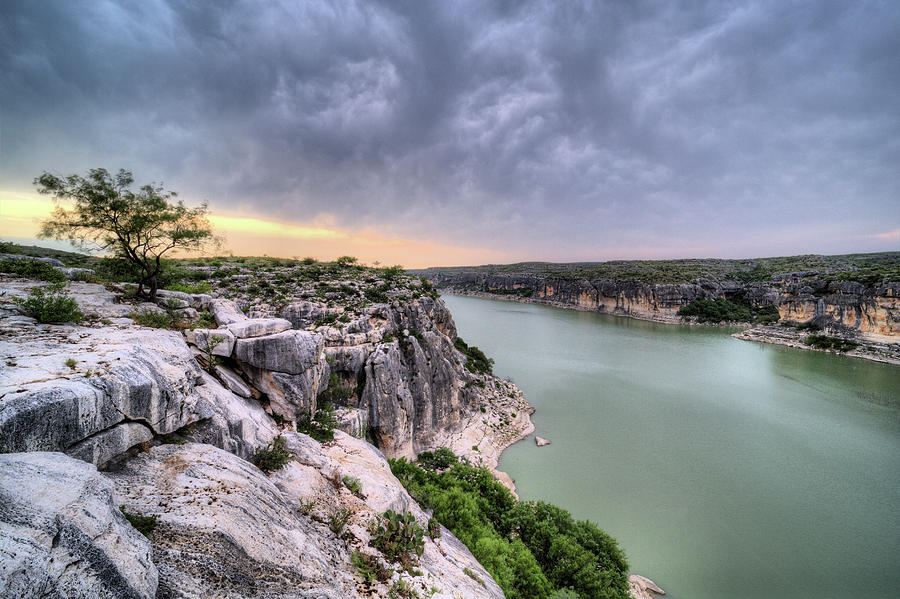
The Pecos River: A Serpent of Silver and Scars in the Arid Heart of the West
In the vast, sun-baked expanse of the American Southwest, where the horizon shimmers with heat and the sky stretches endlessly, there flows a river unlike any other. The Pecos River, a name synonymous with rugged individualism, frontier justice, and the stark beauty of an unforgiving land, is more than just a waterway; it is a ribbon of history, a vein of life, and a boundary that has shaped the very soul of a region. From its icy origins in the Sangre de Cristo Mountains of New Mexico to its confluence with the mighty Rio Grande on the Texas border, the Pecos charts a course of nearly 926 miles, a journey marked by struggle, survival, and an enduring mystique.
The Pecos is a river of contradictions: a life-giver in a land of thirst, a symbol of freedom that has witnessed countless battles over its precious water, and a testament to both human ingenuity and the relentless power of nature. Its name itself, believed to be derived from the Keresan word "Pé-K’u" or "P’e-i-ku" referring to the Pecos Pueblo, whispers of ancient civilizations that thrived along its banks long before the arrival of European explorers.
From Mountain Snowmelt to Desert Serpent

The Pecos begins its epic journey as a crystal-clear mountain stream, fed by the snowmelt and alpine springs high in the Pecos Wilderness, northeast of Santa Fe, New Mexico. Here, surrounded by towering pines and granite peaks, the river is pristine, teeming with trout, and a haven for hikers and fishermen. But this idyllic beginning quickly gives way to a more challenging character as the river descends into the high desert plains.
As it flows southward through New Mexico, the Pecos gathers strength, carving canyons and nourishing pockets of green in an otherwise arid landscape. It passes by historic sites like Fort Sumner, where the Navajo people endured their infamous "Long Walk," and where Billy the Kid met his end. Further downstream, near Carlsbad, New Mexico, the river becomes a focal point for agriculture, its waters diverted and managed by a series of dams – Santa Rosa, Sumner, Avalon, and McMillan – that are crucial for irrigating alfalfa, cotton, and pecan groves. These dams, engineering marvels of their time, transformed the desert into fertile farmland, turning a once-unpredictable river into a controlled, vital resource.
Crossing the invisible line into Texas, the Pecos truly enters the land of legend. Here, the river deepens its cut, flowing through dramatic, high-walled canyons that have intimidated travelers for centuries. The landscape becomes even more stark, more primal, embodying the very essence of "West of the Pecos." It is here that the river earns its reputation as a formidable barrier, a place where the tough get tougher, and where the law, if it existed at all, was often self-made.
The Wild West’s Liquid Lifeline
The Pecos River’s role in the lore of the American Wild West is perhaps its most famous chapter. For cowboys driving cattle from Texas to the railheads in Kansas, crossing the Pecos was a perilous undertaking, often considered the first major hurdle. Charles Goodnight and Oliver Loving, pioneers of the legendary Goodnight-Loving Trail, understood the river’s importance as a liquid lifeline, but also its dangers. Herds of cattle, thirsty and fractious, could easily be lost in its swift currents or bog down in its treacherous banks. The phrase "West of the Pecos" became more than a geographical marker; it was a state of mind, signifying a land beyond conventional law, a place where only the strongest and most cunning survived.
It was in this rugged domain that the mythical figure of Pecos Bill was born – a cowboy so tough he rode a mountain lion, used a rattlesnake as a whip, and dug the Rio Grande. While a fanciful creation of American folklore, Pecos Bill embodies the exaggerated, larger-than-life spirit of the frontiersmen who tamed, or tried to tame, the Pecos country.
No discussion of the "Law West of the Pecos" would be complete without mentioning Judge Roy Bean. Operating out of Langtry, Texas, in the late 19th century, Bean declared himself "The Law West of the Pecos" and dispensed his own brand of justice from his saloon, "The Jersey Lilly." His court, often held under a mesquite tree or inside his bar, was notorious for its eccentric rulings, where the law book was less important than Bean’s own whims and a good shot of whiskey. He famously stated, "I am the law in this county and I ain’t got no use for a lawyer!" Bean’s colorful, often corrupt, reign cemented the Pecos’s image as a land apart, where rules were fluid and individualism reigned supreme.
A River of Contention: The Battle for Water

In an arid region where every drop of water is precious, the Pecos River has been a source of intense conflict and complex legal battles. As early as the late 19th century, farmers in both New Mexico and Texas began diverting its waters for irrigation, leading to disputes over who had the right to use how much. The maxim, "whiskey is for drinking, water is for fighting," never rang truer than along the Pecos.
These disputes culminated in the Pecos River Compact of 1948, an interstate agreement between New Mexico and Texas, ratified by the U.S. Congress. The Compact was designed to apportion the waters of the Pecos River between the two states, aiming to ensure that New Mexico delivered an equitable share of water to Texas. However, the interpretation and enforcement of the Compact have been a continuous source of litigation and contention, often requiring Supreme Court intervention.
The struggle for water is further complicated by the Pecos’s natural salinity. As the river flows through gypsum deposits and saline springs, particularly in its middle and lower reaches, its salt content naturally increases. This natural phenomenon, exacerbated by evaporation and irrigation return flows, can make the water less suitable for agriculture and impact the delicate ecosystem. Projects aimed at desalting the river or diverting highly saline flows have been implemented, a testament to the ongoing human effort to manage and preserve this vital, yet challenging, resource.
Ecology and Environment: A Fragile Balance
Despite its harsh environment, the Pecos River supports a surprisingly diverse ecosystem. Its unique blend of freshwater and saline conditions has fostered the evolution of specialized species, including several endemic fish like the Pecos gambusia, Pecos pupfish, and various Pecos minnows. These hardy species are adapted to the river’s fluctuating flows and challenging water quality, serving as indicators of the river’s overall health.
However, the Pecos River’s ecology is under constant threat. Decades of damming, diversion, and groundwater pumping have altered its natural flow regimes, impacting riparian habitats and native species. Invasive species, such as saltcedar (tamarisk), have choked riverbanks, outcompeting native vegetation and consuming vast amounts of water. Drought, a recurring specter in the Southwest, further stresses the river, reducing flows to trickles and increasing salinity to dangerous levels. Climate change projections suggest an even hotter and drier future, placing additional pressure on this already vulnerable system.
Conservation efforts are underway, often involving collaboration between state agencies, federal organizations, and local landowners. These initiatives focus on restoring natural flow patterns, removing invasive species, protecting critical habitats, and improving water efficiency in agriculture. The goal is to find a sustainable balance between human needs and the ecological integrity of the river, ensuring that the Pecos continues to flow as a living river, not merely a managed conduit.
The Pecos Today: Legacy and Future
Today, the Pecos River continues to weave its narrative through the modern Southwest. It is still a working river, its waters essential for agriculture and industry. The vast Amistad National Recreation Area, formed by the Amistad Dam on the Rio Grande at the Pecos’s confluence, offers opportunities for boating, fishing, and recreation, drawing visitors from across the country. Oil and gas exploration in the Permian Basin, much of which lies in the Pecos watershed, adds another layer of economic activity and environmental concern.
But beyond its utility, the Pecos remains a powerful symbol. It represents the enduring spirit of the frontier, the tenacity required to survive in a challenging land, and the timeless struggle between humanity and nature. For many, to cross the Pecos is still to enter a different world, a place where the landscape demands respect and the past feels remarkably close.
The Pecos River, scarred by dams, diminished by drought, and constantly contested, flows on, a testament to its own resilience. Its silver ribbon, though sometimes threadbare, continues to etch its story across the arid heart of the West. It reminds us that rivers are more than just water; they are living arteries of history, culture, and ecology, whose future depends on our ability to understand, respect, and protect their extraordinary power and delicate balance. The Pecos, with its legendary past and uncertain future, remains a vital, compelling character in the ongoing drama of the American Southwest.


